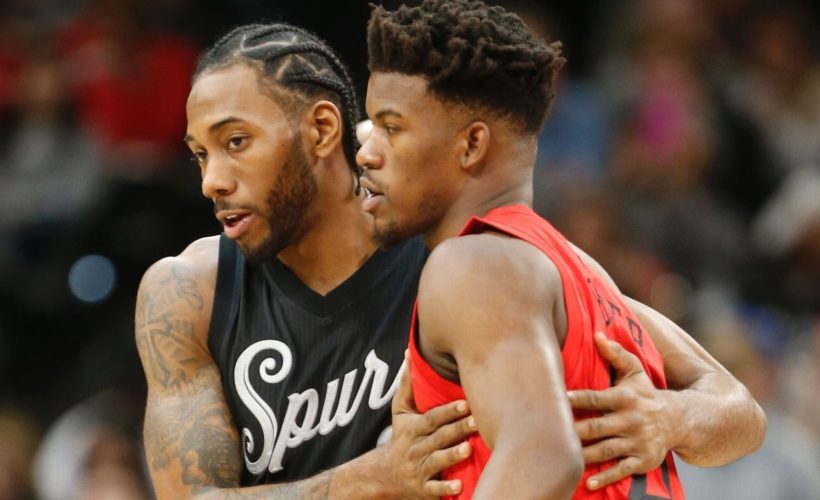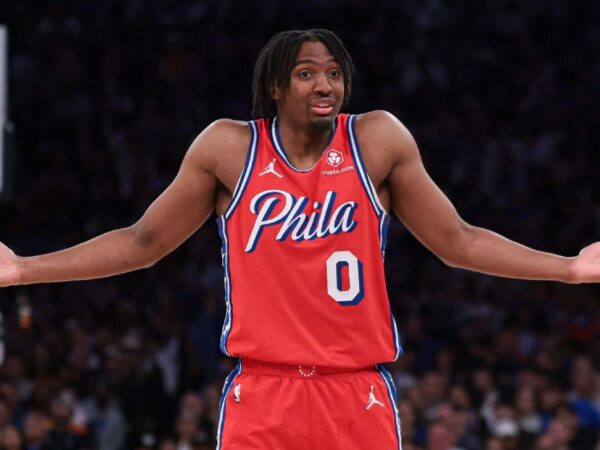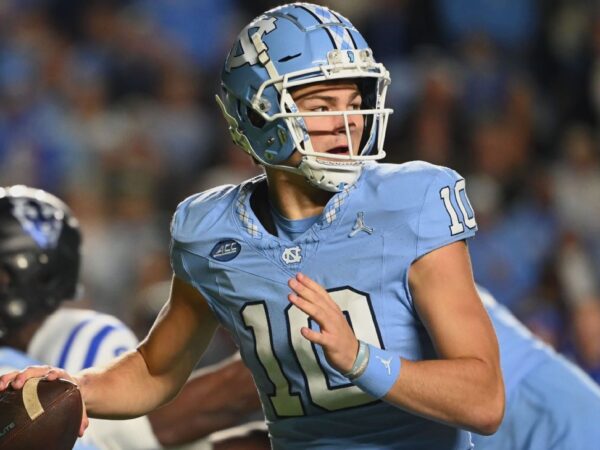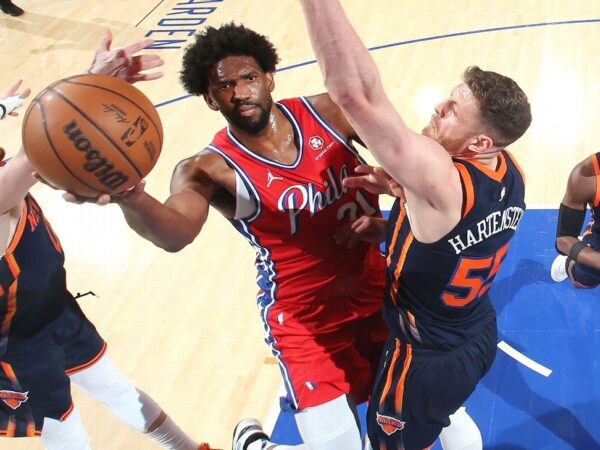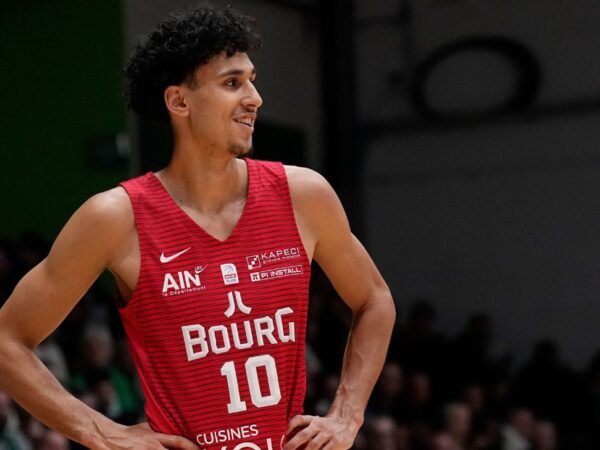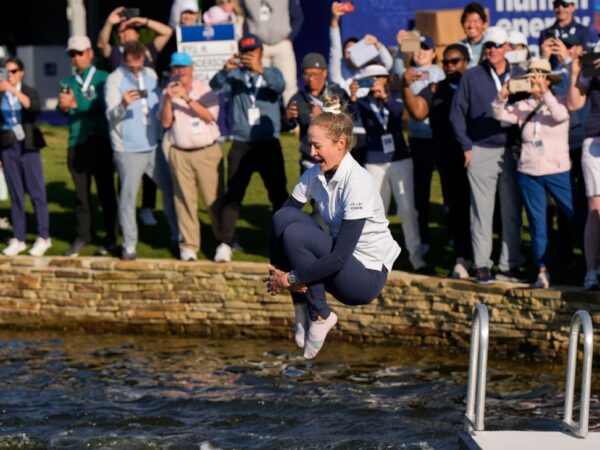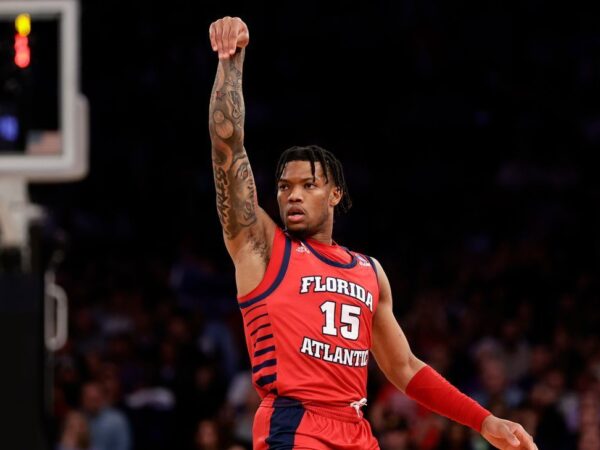Jimmy Butler in June 2017 fell right into the nebulous region where debating a maximum or new supermaximum contract becomes especially fraught for teams.
With another All-NBA berth the next season (2017-18), Butler would qualify for a five-year, $220 million supermax — vaulting to a salary equivalent to 35 percent of the salary cap, 5 percentage points more than normal for a player at his experience level. The difference would amount to $25 million or more over the full deal. Add annual 8 percent raises that might outpace growth in the cap, and such a deal could soak up 40 percent of a team’s cap space on the back end. It is as large a commitment as exists in the NBA.
Butler was the only star on a mediocre team. Without finding a second, and perhaps a third, the Bulls would go nowhere interesting during the length of Butler’s supermax. The sheer size of his deal could make luring those stars harder.
Butler was about to turn 28. Depending on your taste, he at that point was somewhere between the eighth- and 12th-best player in the league. You do the supermax for a healthy top-five-ish guy in that age range without thinking; supermaxes for James Harden and Stephen Curry are no-brainers. Ditto for the deals with which Milwaukee and New Orleans hope to eventually retain Giannis Antetokounmpo and Anthony Davis, respectively. You shouldn’t do it for the 20th-best player. In between? That’s where it gets hard.
Butler carried Tom Thibodeau miles on his knees. A five-year deal would take Butler into the downslope of his career. Everyone knows a five-year max for a 33-year-old is probably going to end badly. The Rockets coaxed Chris Paul, 33, into a shorter four-year deal, and must still fear the projected bang-for-the-buck in Years 3 and 4.
But what about for a 28-year-old?
Chicago bailed out, and dealt Butler — plus the 16th pick in the 2017 draft — for three unproven players and the chance to bottom out for a high pick in the 2018 draft. It was icy in its rationality. It is unclear if it will pay off — if Chicago’s next half-decade-plus with Kris Dunn, Zach LaVine, Lauri Markkanen, Wendell Carter Jr., Jabari Parker, and perhaps another high pick in 2019 will produce more wins, and a better chance at title contention, than the same period with Butler, Nikola Mirotic, a few mid-first-round picks and some cap space.
It is the kind of intentional step back more teams seem comfortable making — and one a majority of executives around the league consider appropriate, if painful.
Reducing the length of contracts in the last two collective bargaining agreements has accelerated the timing of those decisions. Stars reach their third contracts, the pivot point which tests commitment between player and team, earlier than they used to — before they even turn 30.
Chicago cut bait on the Butler era. The Kings wanted no part of a supermax for DeMarcus Cousins. Some within the Pacers had qualms about a supermax for Paul George, sources say — a dilemma that never came to pass, since George did not make an All-NBA team in 2017 before Indiana traded him.
The Clippers re-signed Blake Griffin, then 28 and their first homegrown star in decades, to a regular 30 percent max — and traded him at the first opportunity for Tobias Harris, Avery Bradley on an expiring contract and a pick at the back of the lottery. We hailed it as a victory for LA.
John Wall (27) and Russell Westbrook (29) will earn almost $50 million toward the end of their supermax deals. Both have multiple knee surgeries in the rearview. There is a real chance that one or both of those contracts become of the sort of albatross that hangs on a team for years. Some teams, even those short on star talent, would not trade their best assets (or anything close, in some cases) for either.
Golden State will face similar thorny choices over the next two years with Klay Thompson and Draymond Green (both 28).
Shifting this calculus backward on the age curve onto players in their late 20s makes me feel a little icky. The ickiness started to set in when the Bulls dealt Butler.
Several executives around the league chuckled at my discomfort, suggesting I was naïve. These choices were just a product of teams getting smarter about injuries, aging, probabilities, and what it takes to win championships, they said. If you are going to re-sign Butler on a supermax, they told me, you have to know you will have enough championship equity (if that is a team’s measuring stick — a crucial and evolving factor) on the front end of the deal to justify the pain coming on the back end. Chicago didn’t. They started the cycle over instead of delaying a rebuild.
I get it. I called the Griffin trade a win for the Clippers, and too much of a risk for Detroit. Griffin has had knee issues, and isn’t as explosive as he was three or four years ago. I’ve labeled Wall’s deal borderline untradable, though that is an exaggeration; a few teams hungry for stars would bite on it for the right (discounted) price if they were to miss out in free agency over the next two summers. Wall and Westbrook are minus shooters who rely on speed and athleticism; they profile as players who might age poorly compared to other stars.
Since the cap spike of 2016, max deals carry a new sticker shock, even if they take up the same proportion of the cap as they always have. Some owners didn’t pay even $200 million for their teams. Now one player wants more than that?
The league office would likely point out that Wall and Westbrook got paid — that the supermax did not scare their teams away, even though those teams weren’t close to title contention upon offering those deals. (One of them — the Thunder — also agreed to terms with George on a 30 percent max-level contract.) The Clippers found an eager taker for Griffin. That does not change anything about the dramatic downside risk awaiting.
Something about this is uncomfortable. The Bulls should want Butler on their team from ages 28 to 31. They drafted him, and he made himself into a star star (if an ornery one during the Fred Hoiberg era) in Chicago.
It should be an unabashed organizational triumph for the Wizards to pick Wall No. 1, develop him, and do enough to retain him through his prime.
The Clippers on at least some level should want Griffin to be a Clipper for life — the story they sold him in their free-agency pitch two summers ago, when they built what was essentially a pop-up museum exhibition in his honor and then staged a fake jersey retirement for him.
A lot of fans in those markets want those things, too. They love homegrown stars.
But financial realities can run counter to fan service. Ditching a star — even a borderline top-10 player — can be the correct call. I want players to get every dime to which they are entitled. This is their league. But shouldn’t there be a way for them to get that through their primes — their primes! — without presenting as much downside risk for teams?
Maybe there is nothing wrong with any of this. If there is something wrong, there are no easy answers. The supermax exists in large part as a reaction to Kevin Durant bolting Oklahoma City for Golden State. Teams craved a more powerful hammer to keep their own players — a contract so huge, no player could turn it down.
But those financial commitments turned out to be so big that some teams preemptively turned them down. The combination of these calculated steps back, shorter player contracts, and superstars leveraging their impending free agency to pick new teams has created an unprecedented level of player turnover; as Tom Haberstroh of Bleacher Report pointed out, half of the players in the 2017 All-Star Game have already changed teams.
As for the max-deal dilemma, maybe it is on teams to negotiate harder for a middle ground between giving a player on Butler’s level everything or flipping him — or create the conditions where such a middle ground might develop almost organically. No one forced Washington to lavish Wall with a supermax. Toronto leveraged Kyle Lowry and DeMar DeRozan, both a little lower on the totem pole than Butler, into sub-max deals. The Hawks let Al Horford walk to Boston instead of offering him the full five-year max.
Golden State nudged stars into taking less, and may try to do so again with Thompson and Green. San Antonio did the same for years. There can be both something wrong with a system in which players feel pressure to take less, and something right about a team culture that makes them feel comfortable doing so.
But it’s easier said than done. If the supermax is available, most players will want it. That is natural. It becomes a point of status and pride. The best player on each team usually demands a max contract, even though there aren’t 30 players worth such a large portion of the salary cap.
If strained negotiations push a player out the door, teams over the cap have no method of replacing that lost production. They have to choose between re-signing that guy at a huge number, via Bird rights, or trawling the bargain bin. (The combination of a hard cap and unlimited — up to that cap — individual maximum salaries would warp all of this, but it would create a lot of other ripple effects.)
Still: If more teams held the line with their own free agents, the precedent that every top-25 guy should not expect a max contract might ripple across the league — and reorient the market for such players.
Some other potential tweaks that came up in chats with executives around the league:
• What about a rule that any 35 percent-level max contract connected to a player that has played for only one team — the one that drafted him — does not count against the luxury tax, or counts as half (or something like that) for tax purposes? A couple of high-powered team executives have pitched the similar idea of a “legacy contract” over the years.
This proposal is almost purely economic. It saves owners money. It does not give capped- and taxed-out teams any meaningful new way to add players, and build around an albatross contract.
It also could complicate trades: Do legacy benefits carry over to a new team? Do all legacy players receive a no-trade clause?
• What about a once-every-15-years amnesty provision teams can use only on 35 percent-level max players they drafted and kept for their entire careers to that point? The player still gets all his money, and the team escapes a purgatory that became the price of loyalty.
This introduces moral hazard. It is a get-out-of-jail-free card. If teams make suboptimal decisions, even with 28- and 29-year-old players, they should pay for them, several executives told me. It was not hard to envision that a supermax for Wall could cripple the Wizards in 2022. (To be clear: Wall is really good — I’ve voted him to multiple All-NBA teams over the years — and his deal is fine for now, recent photographic evidence notwithstanding.) If that comes to pass, the Wizards should have to live with it, the thinking goes.
Any easy path to instant cap space widens the gap between richer markets and everyone else. The Lakers, Warriors, Knicks, and other teams can afford to pay players to go away, and splurge on better ones with the resulting cap space. The smallest markets can’t.
The league and players union have also already mitigated the purgatory problem by reducing contract lengths and introducing the stretch provision — which allows teams to waive players, and “stretch” the salary hit over several seasons. Shouldn’t that be enough?
• Perhaps any team who signs a player it drafted to a 35 percent max could receive a special midlevel exception for one-time-only use — a way to attract a player they would otherwise not have the cap flexibility to sign. But is that fair? Does any benefit to drafting a superstar, even one a decade down the line, make tanking a teensy bit more lucrative?
• Related: Why don’t max contracts rise and fall with the cap, so that a player on a 35 percent max earns precisely 35 percent of the cap every season? Right now, if the cap creeps up slowly, those contracts eat up more than 35 percent as raises pile up. If the cap spikes again, 35 percent-level guys might suddenly earn less than an actual 35 percent.
• The league and union could do away with a seniority-based wage scale, so that pay would more accurately reflect production. The league has broached tweaks in past collective bargaining cycles, sources say, but it has been a non-starter. The union will obviously not accept a system in which max contracts decline as players age.
But why not make all players eligible for the 35 percent max as soon as their rookie deals expire? This was the point of the supermax — to grant guys in their eighth and ninth seasons access to the 35 percent max normally reserved for players who have logged at least 10 years. Why not go further? Why shouldn’t Karl-Anthony Towns earn the same portion of the cap in his mid-20s as Paul will earn in his mid-30s? (If you want to do away with the rookie scale, and maybe even the draft, that’s a much bigger discussion that requires reimagining the entire league.)
This could put even more of a premium on drafting well. Teams would have a tougher time opening enough space to sign younger (and restricted) free agents away from rivals. Restraining player movement even further might in turn encourage more tanking. On the flip side, the fatter cap hit might also make it harder to build good teams around those players in their primes.
Maybe there is nothing to fix. Maybe turning Butler, a borderline top-10 player carrying a one-star team, into a bunch of lottery tickets increased Chicago’s long-term championship chances. A lot of this depends on team goals. Chicago with Butler would have been at least solid. Over the past decade or so, fewer owners seem satisfied with solid. The Joe Johnson Hawks are more punchline than aspiration.
Hovering all of this is the relative lack of randomness in the NBA — how hard it is to win four seven-game series without one or two of the best 10 players in the league. Change the playoff structure in a way that gives more teams a chance to go far, and you change the calculus of these Butler-level decisions.
That isn’t happening. But the kind of amorphous, future championship equity Chicago chased in the Butler deal guarantees nothing. Unless you get a top-five player, a true superstar, you could get trapped in this cycle forever: draft a Jimmy Butler, get pretty good, blow it up, find a new Jimmy Butler — or a few interesting young players — and blow it up again before you have to pay them. (Avoiding this cycle was the whole point of the Process in Philly.)
Obviously, there are alternative paths along the way. Chicago can turn its post-Butler assets into better assets, and turn those into something that moves the needle. That is what Boston and Houston have done, in different ways, over the past 10 years.
But eventually you have to commit to something, and someone.
Read more on what’s next for the young Bulls here.
Source:ESPN

